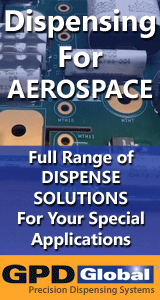Printed Circuit Board Assembly & PCB Design Forum
SMT electronics assembly manufacturing forum.
- SMTnet
- »
- Electronics Forum
- »
- Stencil Cleaning
Stencil Cleaning
![]()
![]() SMTNetters: excellent Forum, keep up the good work all!
...
- Mar 12, 1999
by
Scott Davies
SMTNetters: excellent Forum, keep up the good work all!
...
- Mar 12, 1999
by
Scott Davies
![]()
![]()
![]() Dear Scott,
You are correct in questioning the chemistry ...
- Mar 12, 1999
by
Dear Scott,
You are correct in questioning the chemistry ...
- Mar 12, 1999
by
![]()
![]() In a nutshell, you should be looking for a chemistry first...
- Mar 12, 1999
by
In a nutshell, you should be looking for a chemistry first...
- Mar 12, 1999
by
![]()
![]() | SMTNetters: excellent Forum, keep up the good work all!
...
- Mar 12, 1999
by
| SMTNetters: excellent Forum, keep up the good work all!
...
- Mar 12, 1999
by
![]()
![]() We are a manufacturer of Ultrasonic stencil cleaning syste...
- Mar 12, 1999
by
We are a manufacturer of Ultrasonic stencil cleaning syste...
- Mar 12, 1999
by
![]()
![]() | | SMTNetters: excellent Forum, keep up the good work all...
- Mar 12, 1999
by
| | SMTNetters: excellent Forum, keep up the good work all...
- Mar 12, 1999
by
![]()
![]() Spray cleaners are poor alternatives to todays ultrasonic ...
- Mar 12, 1999
by
Spray cleaners are poor alternatives to todays ultrasonic ...
- Mar 12, 1999
by
![]()
![]() | We are a manufacturer of Ultrasonic stencil cleaning sys...
- Mar 12, 1999
by
| We are a manufacturer of Ultrasonic stencil cleaning sys...
- Mar 12, 1999
by
![]()
![]() Greetings Bill,
My� Aren't we just a little sensitive!...
- Mar 13, 1999
by
Greetings Bill,
My� Aren't we just a little sensitive!...
- Mar 13, 1999
by
![]()
![]() Here Here.
And, avoid the BS
...
- Mar 18, 1999
by
Here Here.
And, avoid the BS
...
- Mar 18, 1999
by
![]()
![]() Scott:
Call me I will send you a sample of our Cleaning...
- Oct 12, 1999
by
Scott:
Call me I will send you a sample of our Cleaning...
- Oct 12, 1999
by
![]()
![]() | Scott:
|
| Call me I will send you a sample of our Cl...
- Oct 12, 1999
by
davef
| Scott:
|
| Call me I will send you a sample of our Cl...
- Oct 12, 1999
by
davef
![]()
- SMTnet
- »
- Electronics Forum
- »
- Stencil Cleaning







